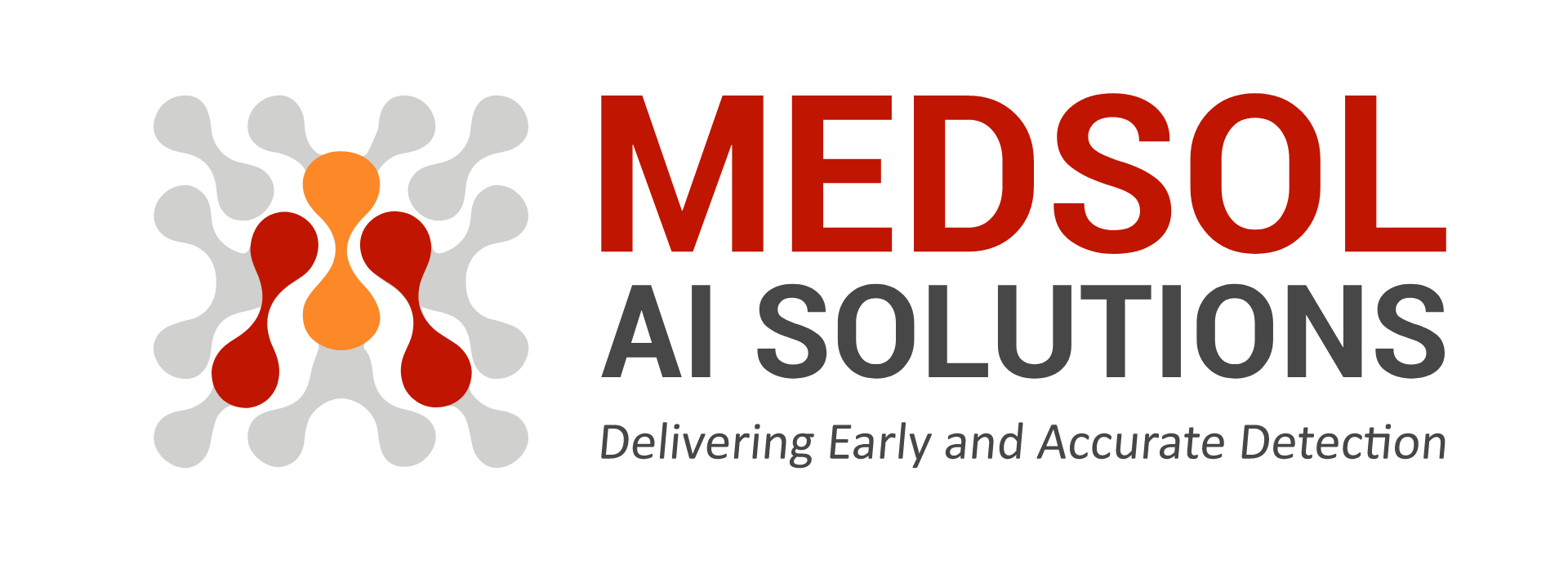How it works
AI-Powered Answers for Breast Cancer Challenges
Breast AI offers realtime breast ultrasound scanning with predictive analysis of possible malignancy, at an accuracy rate of 97,6 %. Breast AI collaborated with Clarius to offer wireless, built in wifi, ultrasound probe technology.
How it works
Leading the Way to Early Detection with AI
Breast AI can be used alongside any other ultrasound system during manual upload. Breast AI boasts an artificial neural network able to predict a second neural layer of the histological subtype associated with malignancy.
How it works
Elevating Care, Enhancing Lives
Our solution connects the dots between diagnosis also through community education, patient support networks and referral pathways to all the hospitals in surrounding communities.
Detect Early. Treat Better. Save Lives
Breast AI is an AI-enabled point-of-care ultrasound (POCUS) system for breast cancer risk assessment, supported by a comprehensive training programme released in 2025.
It is aimed at clinicians, nurse practitioners, radiographers, diagnostic imaging specialists, primary care facilities, oncology screening programmes, and mobile breast screening units, especially those operating in underserved communities. The system’s primary purpose is to integrate clinical breast examination (CBE) with real-time AI-driven ultrasound image analysis, assisting healthcare providers in early detection and risk stratification of breast cancer during routine screening or diagnostic visits.
Early Detection, Enhanced Care
The Breast AI training programme provides a complete educational foundation, covering breast anatomy, embryology, normal variants, and high-risk factors for malignancy, as well as CBE methodology, risk factor assessment, and ultrasound scanning techniques. The system operates using the Clarius L15 probe via the Clarius app, connecting directly to the Breast AI platform to generate malignancy probability scores, with any area scoring 40% or higher flagged for specialist referral. Imaging is complemented by quadrant mapping and the breast “o’clock” localisation system to ensure precise lesion documentation for surgical and diagnostic purposes.
AI-Driven Ultrasound. Accessible Diagnostics
The app supports both online and offline operation, storing data for up to 100 patients with 50 captures each before requiring a Wi-Fi connection for syncing. After each examination, the system generates a structured patient report, embedding images and clinical notes for efficient referral and continuity of care.
Breast AI offers significant value for screening programmes by providing on-site, real-time breast cancer risk evaluation, enabling earlier detection and faster decision-making. For clinics, it reduces dependency on immediate specialist availability by triaging cases for priority follow-up. Public health initiatives benefit from its ability to extend breast cancer detection into low-resource areas, while training institutions can use the platform’s structured curriculum to upskill healthcare providers in AI-assisted breast imaging. Through its combination of education, workflow integration, and advanced diagnostic capability, Breast AI bridges the gap between clinical examination and high-accuracy imaging, enhancing early intervention potential and optimising patient outcomes.
Transforming Breast Cancer
Diagnosis with Medsol Ai
Education of communities
RURAL CLINICS
Patient Navigators
TaSK TEAMS
Empowering
Communities Through Education. Learn, Grow, Thrive
Access to rural clinics for Breast AI screening by trained health care professionals
Patient navigators assisting with referral pathway to nearby hospital centres
Referral task team consisting of radiologists, surgeons
and oncologists
Transforming Breast Cancer
Diagnosis with Medsol Ai
Education of communities
Empowering
Communities Through Education. Learn, Grow, Thrive
RURAL CLINICS
Access to rural clinics for Breast AI screening by trained health care professionals
Patient Navigators
Patient navigators assisting with referral pathway to nearby hospital centres
TaSK TEAMS
Referral task team consisting of radiologists, surgeons
and oncologists
Innovate.
Detect. Conquer.
The highest rate of cancer-related mortality in women in Africa is breast cancer. This is due to an increased stigma associated with the disease in rural settings and the lack of appropriate infrastructure in the healthcare sector to promote earlier detection and diagnosis. The rate of TB diagnosis in South Africa has also increased, particularly in the occupational health mining industry.
To address these challenges, we propose a joint collaboration between sector-related market leaders and passionate innovation drivers for change. Our focus is patient-based care with innovative specialist solutions to improve turnaround times, diagnostic efficiency rates, and to narrow the gap between diagnosis and treatment regimes. We will be offering a state-of-the-art AI and DML system, available as an Android application, able to categorize and provide differential diagnosis of health-related diseases within seconds.
The product is SAPHRA accredited and has gone through rigorous peer-review testing and data validation. We offer a Patient Referral BlueprintTM bridging the gap between diagnosis and treatment. We collaborate with local hospitals, patient navigators, and community health care workers to ensure no patient is left behind during their journey of diagnosis.
Redefining
Breast Cancer
Detection.
Our vision is to promote patient-based outcomes in the healthcare industry.
Press & Media
AstraZeneca launches pioneering Africa Health Innovation Hub
Pharmaceuticals giant AstraZeneca launches Africa Health Innovation Hub to promote healthcare equity via AI, science and technology AstraZeneca is teaming up with
Sustaining the Mission: Strategic Options to Scale Unjani Clinics NPC by 2030
Unjani Clinics NPC, a non-profit organization which has a goal of improving access to primary healthcare in South Africa, has grown
South Africa: Breast cancer screening apps make life easier for patients and healthcare workers
For years, they have been suffering as they watch their patients go from pillar to post to get a proper diagnosis
